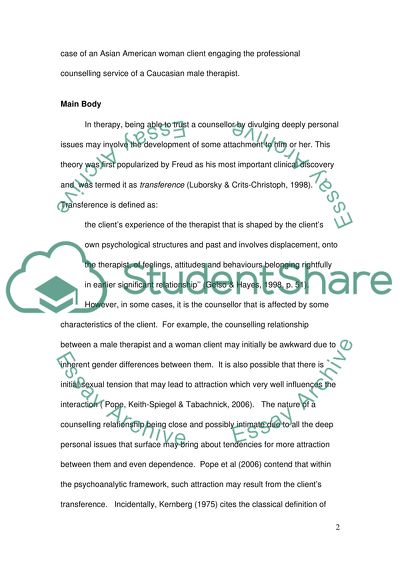Cite this document
(“Gender and Cultural Issues in the Counselling Process Essay”, n.d.)
Gender and Cultural Issues in the Counselling Process Essay. Retrieved from https://studentshare.org/psychology/1447829-explore-how-gender-or-and-ethnic-differences-can
Gender and Cultural Issues in the Counselling Process Essay. Retrieved from https://studentshare.org/psychology/1447829-explore-how-gender-or-and-ethnic-differences-can
(Gender and Cultural Issues in the Counselling Process Essay)
Gender and Cultural Issues in the Counselling Process Essay. https://studentshare.org/psychology/1447829-explore-how-gender-or-and-ethnic-differences-can.
Gender and Cultural Issues in the Counselling Process Essay. https://studentshare.org/psychology/1447829-explore-how-gender-or-and-ethnic-differences-can.
“Gender and Cultural Issues in the Counselling Process Essay”, n.d. https://studentshare.org/psychology/1447829-explore-how-gender-or-and-ethnic-differences-can.


